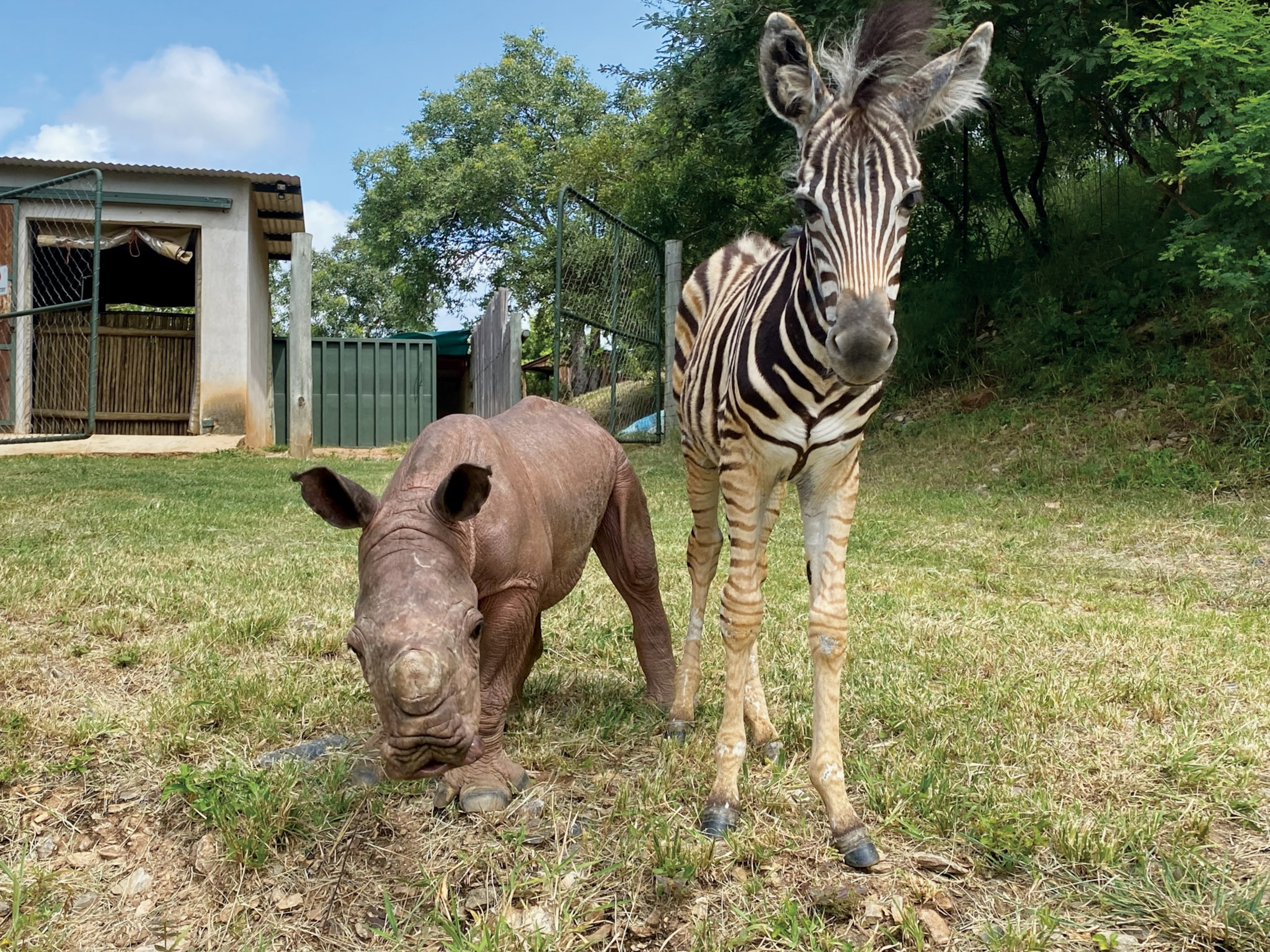On a frigid day in December 2009, four northern white rhinos were picked up from the Dvůr Králové Zoo in the Czech Republic and transported to the airport in Prague, where they were loaded onto a Martinair 747 cargo jet as snow swirled outside. Accompanied by a veterinarian and packed in special wooden crates built to support their heft—they typically weigh between 3,750 pounds and 5,290 pounds—the rhinos flew to Kenya. There, they were scooped up in DHL trucks and driven to Ol Pejeta, a wildlife conservancy nearly three times the size of San Francisco in the country’s center.

The four individuals—two males named Suni and Sudan, and two females named Najin and Fatu—represented half of the surviving northern white rhino population, a subspecies of white rhino distinguished from southern white rhinos by their furry ears and shorter front horns. According to Save the Rhino, an advocacy group, as late as 1960, about 2,360 northern white rhinos roamed Chad, the Central African Republic, Sudan, the Democratic Republic of the Congo, and Uganda. But by 1984, rampant poaching and civil violence had slashed their population to about 15. (Read more about the deadly rhino horn trade.)
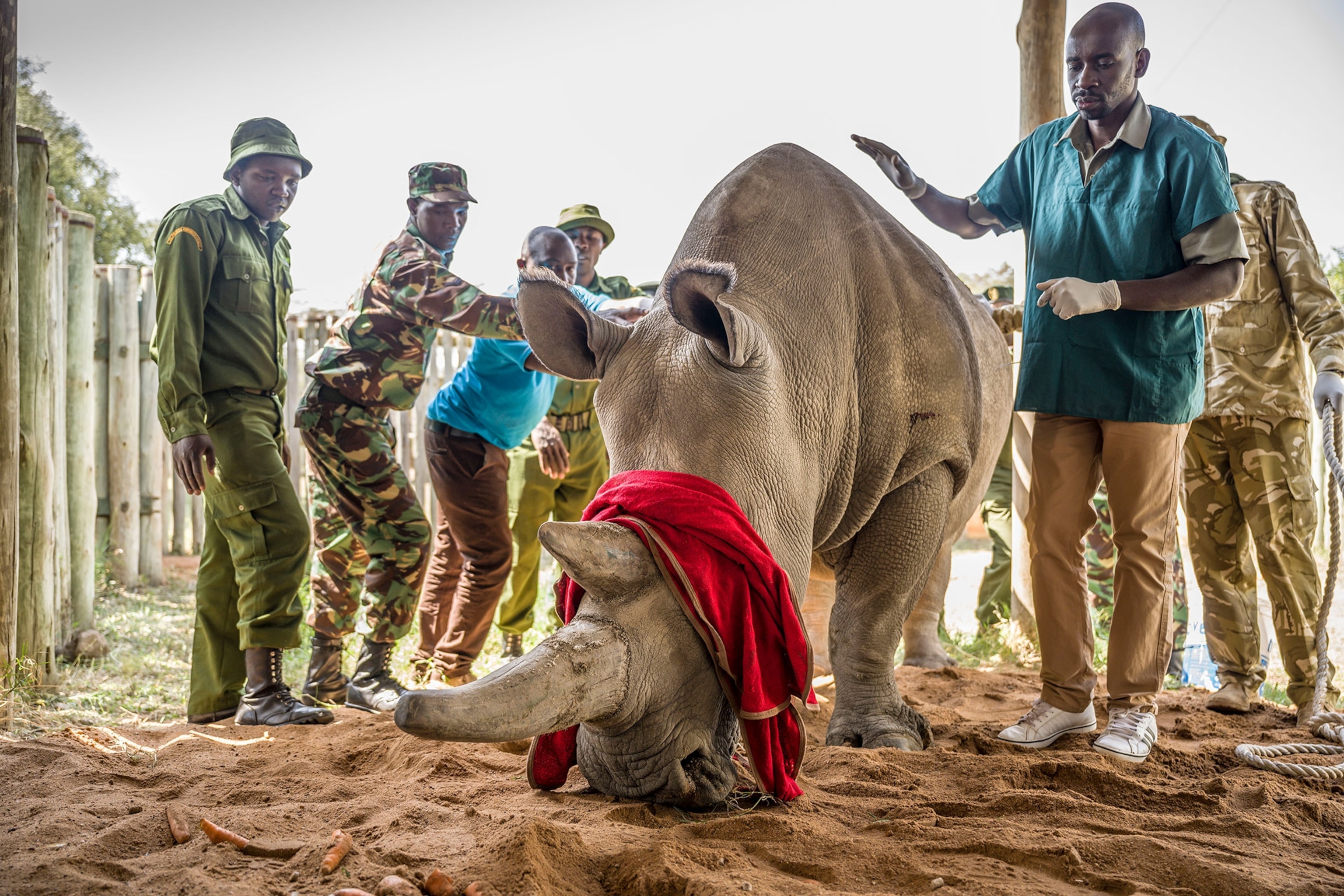
Twenty five years later, in 2009, just eight northern white rhinos remained—all of them housed either at Dvůr Králové in the Czech Republic or the San Diego Zoo. Only four of them were potentially fertile. Conservationists hoped that transporting those four to Ol Pejeta in their native Africa, with its warmer climate and expansive grasslands, would inspire them to breed and allow the subspecies to recover.
The change of scenery did less than the conservationists had hoped. Though the rhinos’ keepers witnessed several mating attempts, Fatu and Najin remained barren and were eventually deemed incapable of bearing calves. Meanwhile, the few relatives they had begun to pass away. In 2011, Nesari, an elderly female, died at Dvůr Králové. She was followed by Suni, one of the males at Ol Pejeta, Angalifu, Nabire, Nola, and finally, in the spring of 2018, Sudan, the last male northern white rhino on Earth. Since then Fatu and Najin have been the only representatives of their kind.
While the deaths were devastating, scientists were prepared. For years, Thomas Hildebrandt, head of reproduction management at the Leibniz Institute for Zoo and Wildlife Research, and his team had been collecting and freezing semen from several northern white rhino bulls—including Sudan. Back in 2014, after learning that Fatu and Najin were likely infertile, he organized an international team that included the Dvůr Králové Zoo, the Kenya Wildlife Service, Ol Pejeta Conservancy, and Avantea, an Italian animal reproduction lab. The group devised a scheme to regenerate the northern white rhino population through in vitro fertilization, a process in which egg and sperm are fertilized outside the body. (Also read about the urgent effort to save the Sumatran rhino.)
Today, the team announced it has made significant progress towards that goal: On August 22, the team successfully retrieved eggs from Fatu and Najin—a feat that had not previously been attempted on northern white rhinos. After years of research, preparation, and practice, this is a critical first step in the quest to breed new members of this critically endangered subspecies.
Getting the eggs
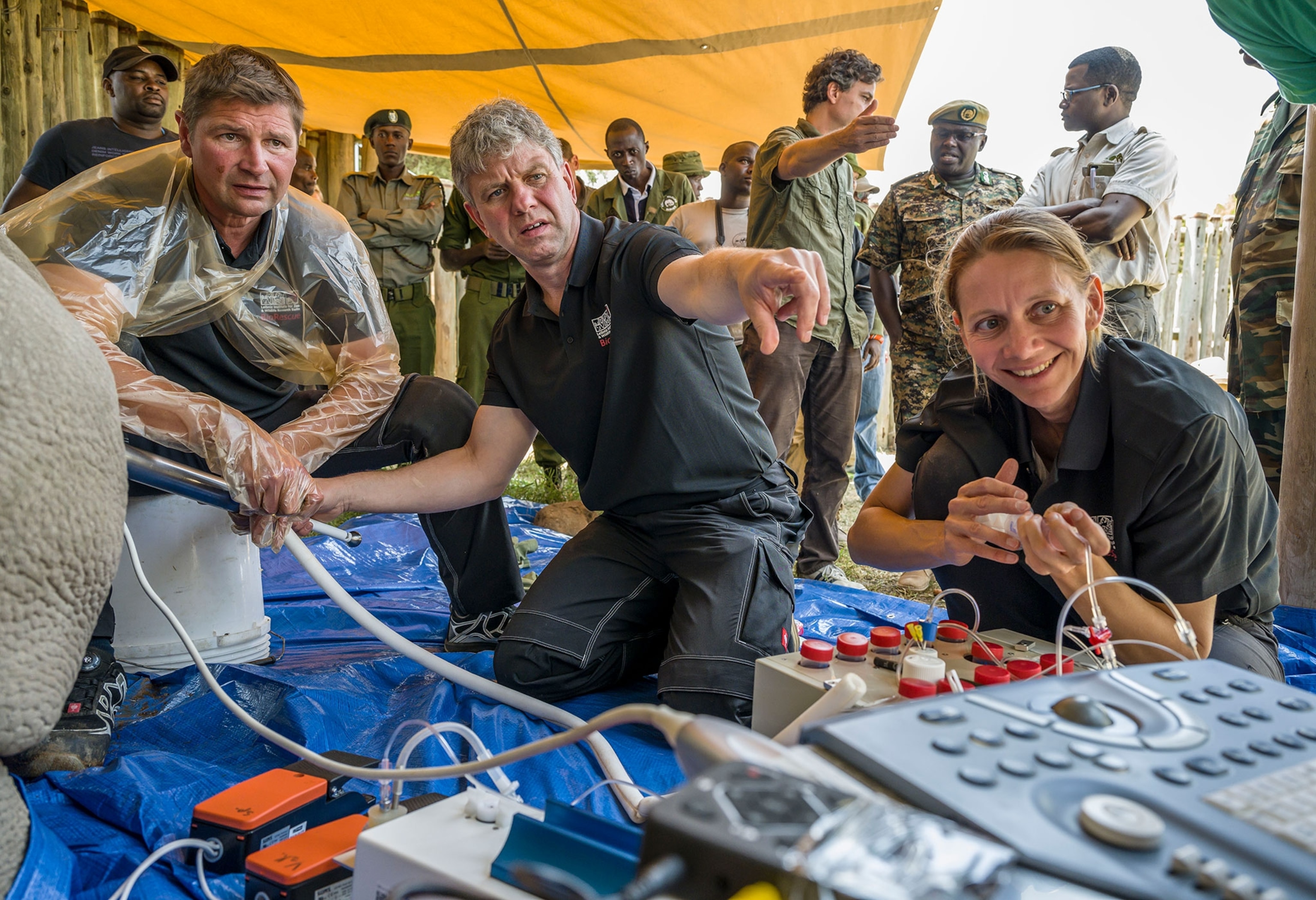
In preparation for attempting the procedure on Fatu and Najin, the team honed their extraction skills by practicing extracting eggs from scores of southern white rhinos. It’s a delicate process because of the risk posed by anesthesia and the presence of nearby large blood vessels. In 2018, Avantea’s Cesare Galli, an Italian veterinarian and embryologist famous for cloning the first horse, injected some of those eggs with the semen of a northern white rhino to create hybrid blastocysts, or early embryos. This demonstrated that the semen could produce transferable embryos.
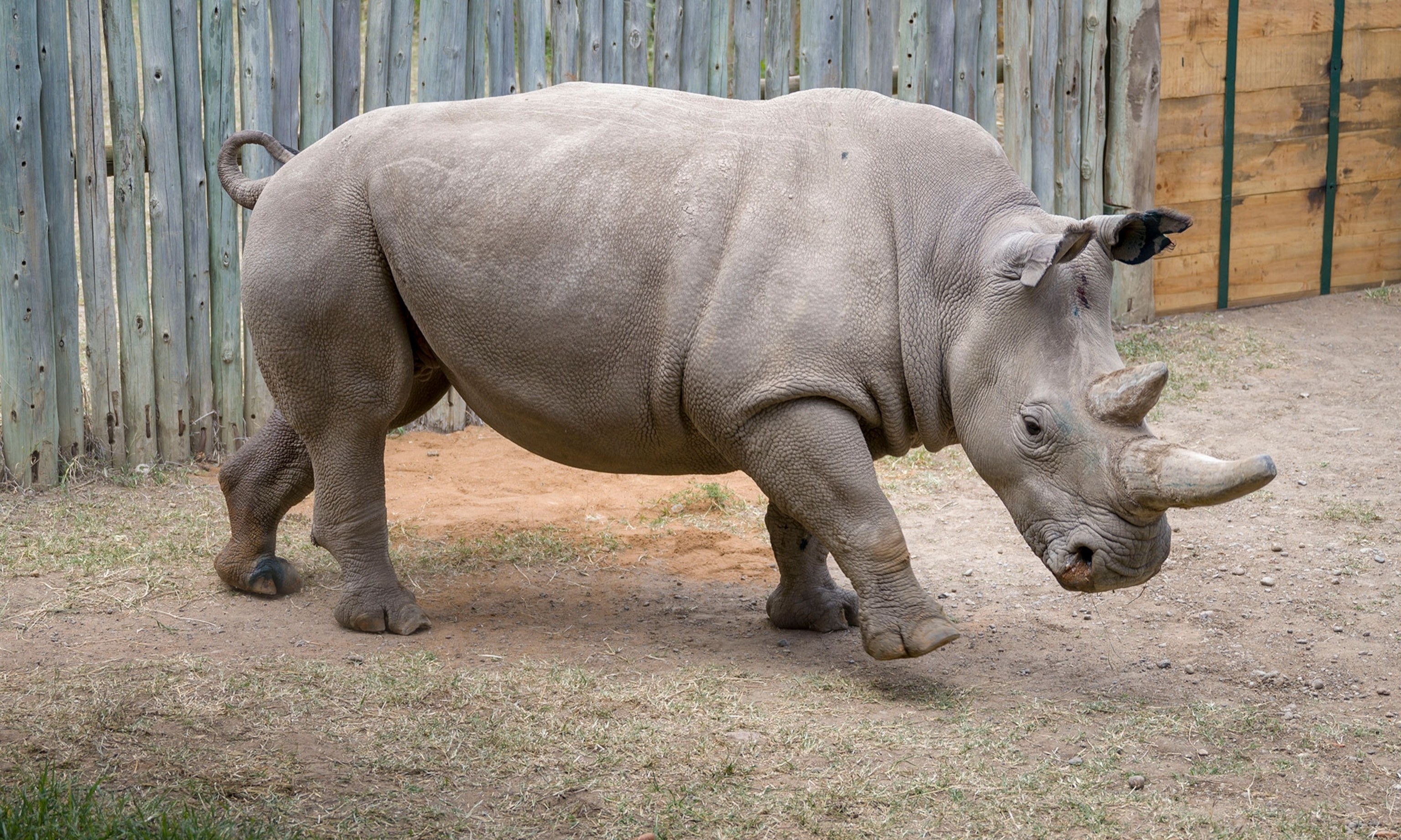
Finally, on Thursday, the team determined they were ready to do it for real. They anesthetized Fatu and Najin in their enclosures at Ol Pejeta and extracted their eggs—a tricky process that requires reaching the animals’ ovaries several feet inside their bodies. Supervising veterinarians didn’t want the rhinos to be asleep for longer than two hours, and frequently reminded the scientists of how much time remained, says Elodie Sampéré of Ol Pejeta.
Upon completing the procedure, the team rushed the retrieved eggs to a mobile laboratory fashioned from a shipping container. While he examined the cells through a microscope, Galli ordered everyone to be silent so he could focus. Ultimately he counted ten viable oocytes—five from each rhino. The team was thrilled.
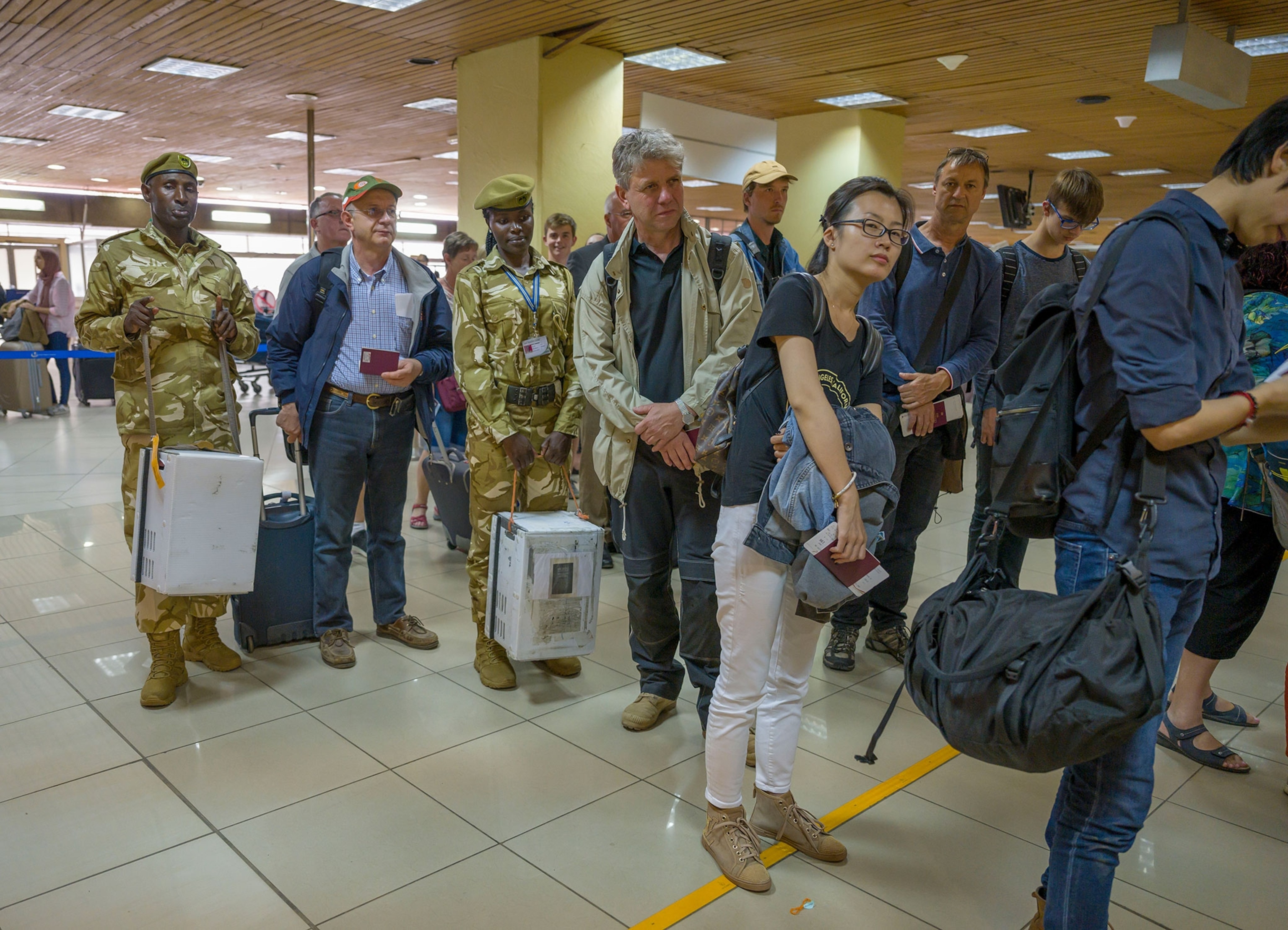
“I was here five years ago when we found out Fatu and Najin would not be able to reproduce naturally, and we realized we’d need to pursue artificial means,” rememberers Jan Stejskal, director of international projects at the Dvůr Králové Zoo. “Now it’s finally happening.”
But the team did not have much time to revel in their achievement. The scientists carefully packed the eggs into blocky white coolers and quickly carried them onto a waiting helicopter, which ferried them to the airport in Nairobi. From there they boarded a commercial flight to Frankfurt, where they switched to another plane destined for Italy.
At Galli’s lab in Cremona, the team will now wait to see which egg cells mature and fertilize them with frozen northern white rhino semen. Should the fertilized eggs develop into embryos, the scientists will cryopreserve them until they perfect their technique for transferring them into a southern white rhino surrogate.
New methods
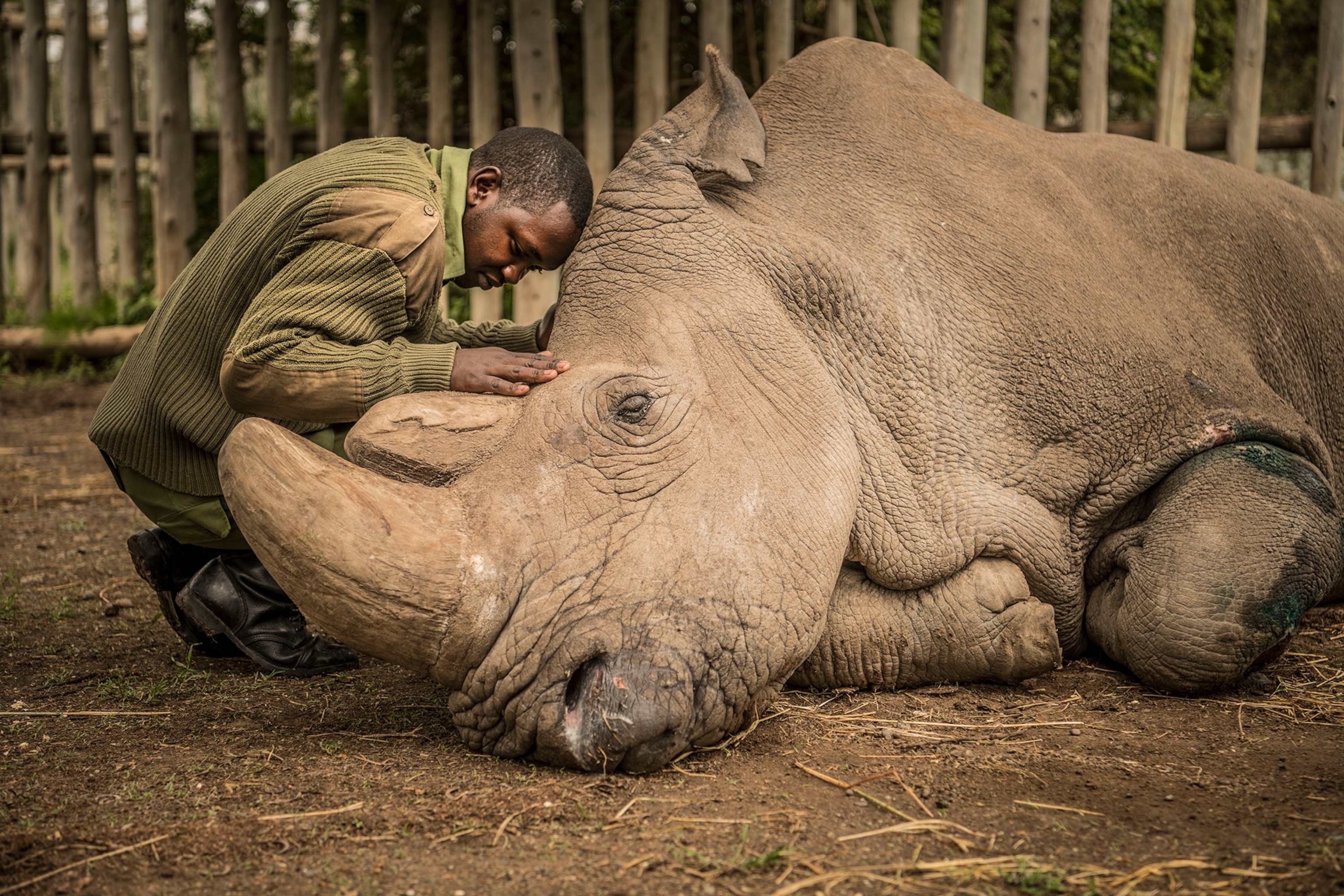
Though this is a significant step in the battle to save northern white rhinos, some caution it’s too early to celebrate their salvation just yet. Artificial insemination has successfully produced white rhino calves, but in vitro fertilization has never been completed with rhinos before. The closest scientists have come is creating a viable embryo and attempting to transfer it.
Moreover, the scientists said in a news release, the quality of semen collected from the northern white rhinos is poor and comes from just a few bulls—though Stejskal points to the hybrid blastocysts as proof of its viability.
Even if a southern white rhino cow can carry a northern white rhino fetus to term—which is uncertain—the northern white rhino calves may not be genetically diverse enough to sustain a population.
“This whole methodology is in its infancy, says Susie Ellis, the executive director of the International Rhino Foundation, a conservation nonprofit. “It’s a long way from developing a cluster of cells that’s an embryo to having a rhino on the ground—and then subsequently having a herd of rhinos on the ground.”
The team of scientists is also working on an alternative—though equally challenging—approach. Using preserved skin samples from twelve northern white rhinos, the researchers hope to produce gametes, or egg and sperm cells, which can then be added to the in vitro process to diversify the gene pool. Last year, a study suggested that the sample tissues contain enough genetic diversity to eventually support a healthy northern white rhino population.
Jeanne Loring, a stem cell researcher at the Scripps Research Institute in La Jolla, California, who is working separately on a similar project, is optimistic that such techniques will ultimately produce rhinos. “It’s produced pups in mice,” she explains “And, in our experience, anything that can be done in mice can be adapted to humans – and that also means white rhinos.”
Fatu and Najin might pass away before such research comes to fruition. But scientists hope that, with their genetic material preserved, their deaths will mean just a pause—not end of their subspecies.






